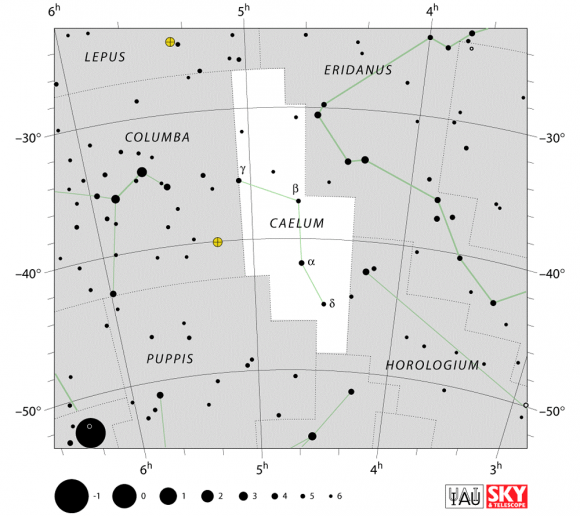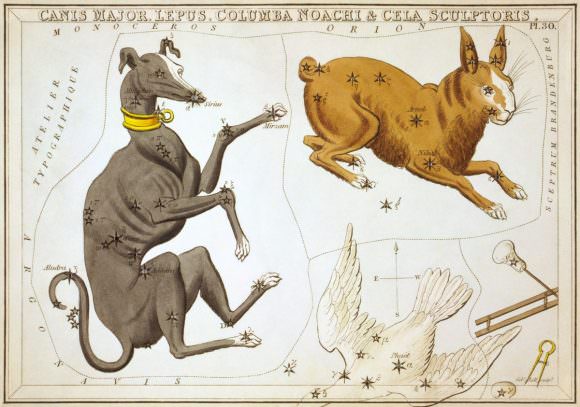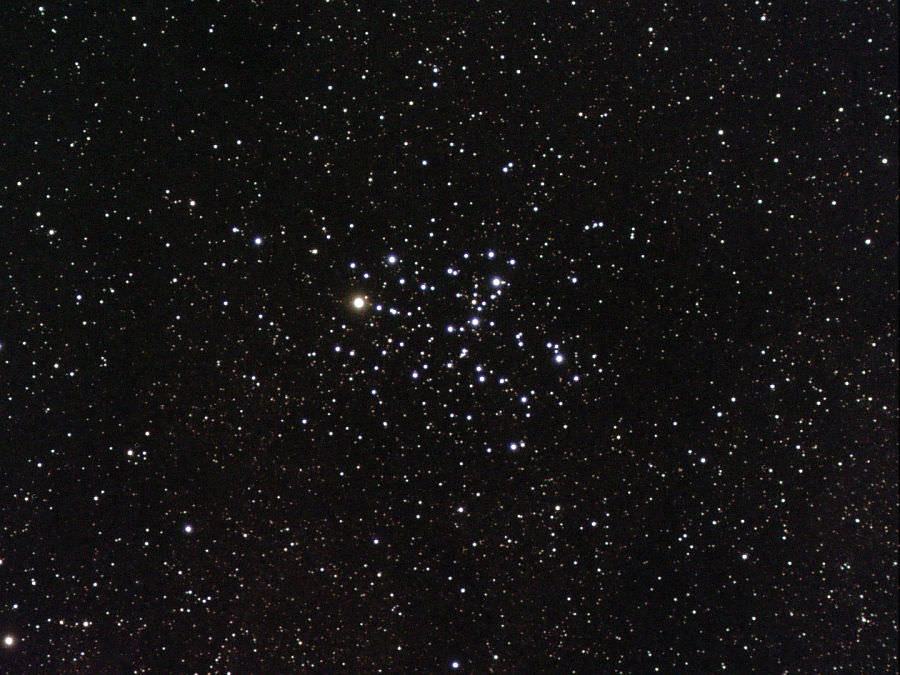Welcome back to Constellation Friday! Today, in honor of our dear friend and contributor, Tammy Plotner, we examine the Caelum constellation. Enjoy!
In the 2nd century CE, Greek-Egyptian astronomer Claudius Ptolemaeus (aka. Ptolemy) compiled a list of the then-known 48 constellations. Until the development of modern astronomy, his treatise (known as the Almagest) would serve as the authoritative source on astronomy. This list has since come to be expanded to include the 88 constellation that are recognized by the International Astronomical Union (IAU) today.
One of these constellations is Caelum, which was discovered in in the 1750s by French astronomer Nicolas Louis de Lacaille, and is now counted among the 88 IAU-recognized constellations. It is the eight-smallest constellation, with an area just less than that of Corona Australis (another southern constellation), and is bordered by the Dorado, Pictor, Horologium, Eridanus, Lepus and Columba constellations.
Name and Meaning:
The name Caelum, in Latin, literally means “chisel”, though the word can also mean ‘the heavens’. According to an antiquated school of thought, the sky (caelum, ‘sky, heaven, the heavens’) is rounded, spinning, and burning; and the sky is called by its name because it has the figures of the constellations impressed into it – just like an engraved (caelare) vessel. In Lacaille’s imagination, he saw this constellation as therefore representing “les Burins”, or the tools of a sculptor.

Notable Features:
The constellation of Caelum has very little to offer observers using either binoculars or telescopes, with only four primary stars visible to the unaided eye and only eight stars with Bayer/Flamsteed designations. However, Gamma Caeli is a widely separated binary star system with a distance of 0.22°. It is composed of a magnitude 4.5 red giant and a magnitude 6.34 white giant.
For an extreme challenge, try locating Alpha Caeli. At an approximate distance of 65.7 light years from Earth, this yellow-white F-type main sequence dwarf with an apparent magnitude of +4.44 has an an extremely faint companion. It is magnitude 13, with a position angle of 121º and a separation 6.6″.
If you like long-term variable stars, you could always look for R Caeli, a long-term Mira-type that ranges from from 6.7 to 13.7 every 391 days. Or how about X Caeli, a Delta-Scuti type star? It’s changes are much faster – but far less noticeably. It changes by one tenth of a magnitude (6.3 to 6.4) every three hours and fourteen minutes.
For those looking for Deep Sky Objects, a big telescope is necessary. This is because NGC 1679 is about all there is to see, and it doesn’t appear lightly. Located about two degree south of Zeta Caeli, there’s not even a magnitude guess at this small spiral galaxy – but it does measure about 3.2 arc minutes, and appears to be an irregularly-shaped galaxy. There are indications that it may be a dwarf starburst galaxy.

History of Observation:
Caelum was introduced by Nicolas Louis de Lacaille in the 1750s to help chart the southern hemisphere skies. Lacaille gave the constellation the French name Burin, which was originally Latinized to Caelum Scalptorium (“The Engravers’ Chisel”). English astronomer Francis Baily would alter shorten this name to Caelem, as suggested by fellow astronomer John Herschel.
In Lacaille’s original chart, the constellation was shown both as two types of chisels – a burin (a steel-engraving chisl) and an échoppe (an etching chisel) – although it has come to be recognized simply as a chisel.
Finding Caelum:
Though it is quite small and faint, locating Caelum is not difficult if you know where to look. Using stellar coordinates, you can find it by looking to the first quadrant of the southern hemisphere (SQ1), and then tracing it to between latitudes +40° and -90°. Or, start by picking out Canopus (the brightest of Carina‘s stars), pan due east, and then spot the small chisel between its neighbors.
Caelum is bordered by Dorado and Pictor to the south, Horologium and Eridanus to the east, Lepus to the north, and Columba to the west. The Caelum constellation occupies an area of 125 square degrees, and can be seen during the month of January at around 9 pm.
We have written many interesting articles about the constellation here at Universe Today. Here is What Are The Constellations?, What Is The Zodiac?, and Zodiac Signs And Their Dates.
Be sure to check out The Messier Catalog while you’re at it!
For more information, check out the IAUs list of Constellations.
Sources:



